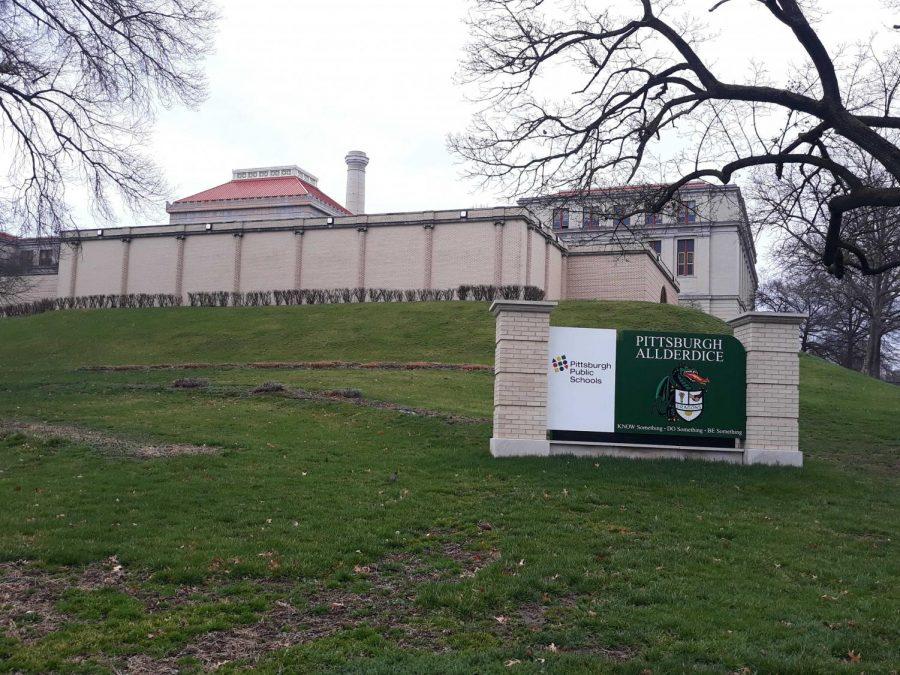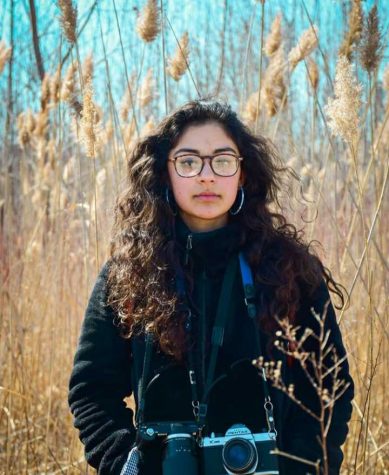Opinion | Pittsburgh Public Schools should not reopen until the fall
April 2, 2021
From 2015 to 2019, I attended Allderdice High School, which is part of the Pittsburgh Public School district and has nearly 1,500 students.
In a normal academic year, most classrooms hold nearly 40 students, with not enough room to put backpacks down between chairs. The building isn’t very clean, with dirt and grime often combined with a lack of soap, stall doors and functioning locks in bathrooms. Many teachers had to pay for their own classroom supplies. The idea of that building opening just next week is unnerving to hear about, not just for me, but for many families who are not yet vaccinated against COVID-19.
Allderdice is part of the City’s school district, which enrolls around 25,000 students. That school district thinks it’s okay to reopen and put their unvaccinated majority of students and families at risk. Pittsburgh Public Schools also currently does not have vaccination tracking for employees and teachers.
Many people think that schools can reopen because children are less likely to catch and transmit the virus. But not only can students catch COVID-19, they can transmit it to their family members, and complications from the virus itself can cause lasting organ damage. Just because the virus might not kill a child, that doesn’t mean you should put them at risk for impaired lung function for the rest of their lives.
The first students are going back to in-person learning on April 6, just two months before the end of the school year. For 10 weeks of school, it is not worth it to put students and their families at risk, and stress students out more with yet another routine change when they’ve finally gotten into the routine of online classes.
Pittsburgh Public Schools has divided their students into four “support categories” that will phase back into hybrid and in-person learning at different times. The four support categories are based on how well a student is performing academically in an online learning setting, with students who are not performing well and kindergarten students being among the first to return, and students doing the best online returning last.
Schools are not just a place to learn academics, but many families — especially low-income families — often rely on schools for food security and child care. There are many reasons why a student can fall behind in academics during the pandemic. Obviously, online classes aren’t for everybody, and those with attention deficit disorder/ADHD, autism, learning disabilities or other developmental disorders have an added layer of frustration with online learning. For these students, online school is detrimental to their education and in person may be a better option, if they aren’t immunocompromised or in a pod with someone who is.
Those who are immunocompromised, or live with someone who is, are likely experiencing high levels of stress which may make it much harder to focus and complete work. Many students are also grieving the deaths of loved ones lost to the COVID-19 pandemic, which is not conducive to getting good grades. Going back to in-person school with only a month or two left in the school year is not going to improve learning. Rather, the lack of a consistent routine actually may result in a continued decline in academic performance due to a readjustment phase.
We all know how different in-person school is compared to online school. It’s almost a different world. I can sit in whatever position I want to and voice all my inner opinions out loud without anyone hearing me. After a year in online school, transitioning back to in-person classes is going to be hard for everybody, because we have gotten used to our current settings.
Think about how nervous you felt on the first day of high school — assuming that your first day of high school wasn’t this year and remote. Multiply that anxiousness and then spread it out over a prolonged extent of time as your body and mind both get acclimated to an in-person learning environment with double-layered masks, the stress of possibly getting sick and not being able to sit within 6 feet of your friends, in Pittsburgh’s case.
60 Minutes did a piece last Sunday on what it actually takes to get students back into school, and looked into the studies being done on how COVID-19 spreads in a classroom. Marietta City Schools in Georgia has been sort of a guinea pig for CDC studies of how the virus spreads in a school setting, and the most effective ways to keep it from spreading. The CDC found that cases are more prevalent in younger students than in middle school because elementary school classrooms are more suited for learning with students close together. Marietta’s schools have been partially open since September, when COVID-19 testing became widely available, with the option for students to stay at home if they choose to.
But opening schools again is also a slippery slope. Grant Rivera, Marietta’s superintendent, enforces mask-wearing in the district, but said “once you open those doors, the desire to return to normal pulls at the mask strings.” Athletes want to play their sports, bands want to play and kids want to talk to their friends during lunch, and before you know it, COVID-19 spreads like wildfire. This is evident in the recently reported cases of COVID-19 at Allderdice linked to basketball.
Marietta spent more than $7.5 million adapting their school district to a more pandemic-safe environment. Partitions separate desks, facilities are constantly cleaned, library books sit in quarantine after being returned and students who ride the bus to school carry a radio frequency ID tag so that they can be easily notified if they were near someone who tested positive for COVID-19. Students who are exposed must quarantine for seven to 10 days. And still, teachers and students tested positive for COVID-19, meaning that even more restrictions and adaptations would be required to make a truly safe school environment — if that is even possible.
To do all of that for just two months of school just doesn’t seem worth it, when that money can go toward making school as safe as it can be for the fall when students and their families are more likely to be vaccinated.
Dalia Maeroff writes primarily about issues of psychology, education, culture and environmentalism. Write to her at [email protected].









